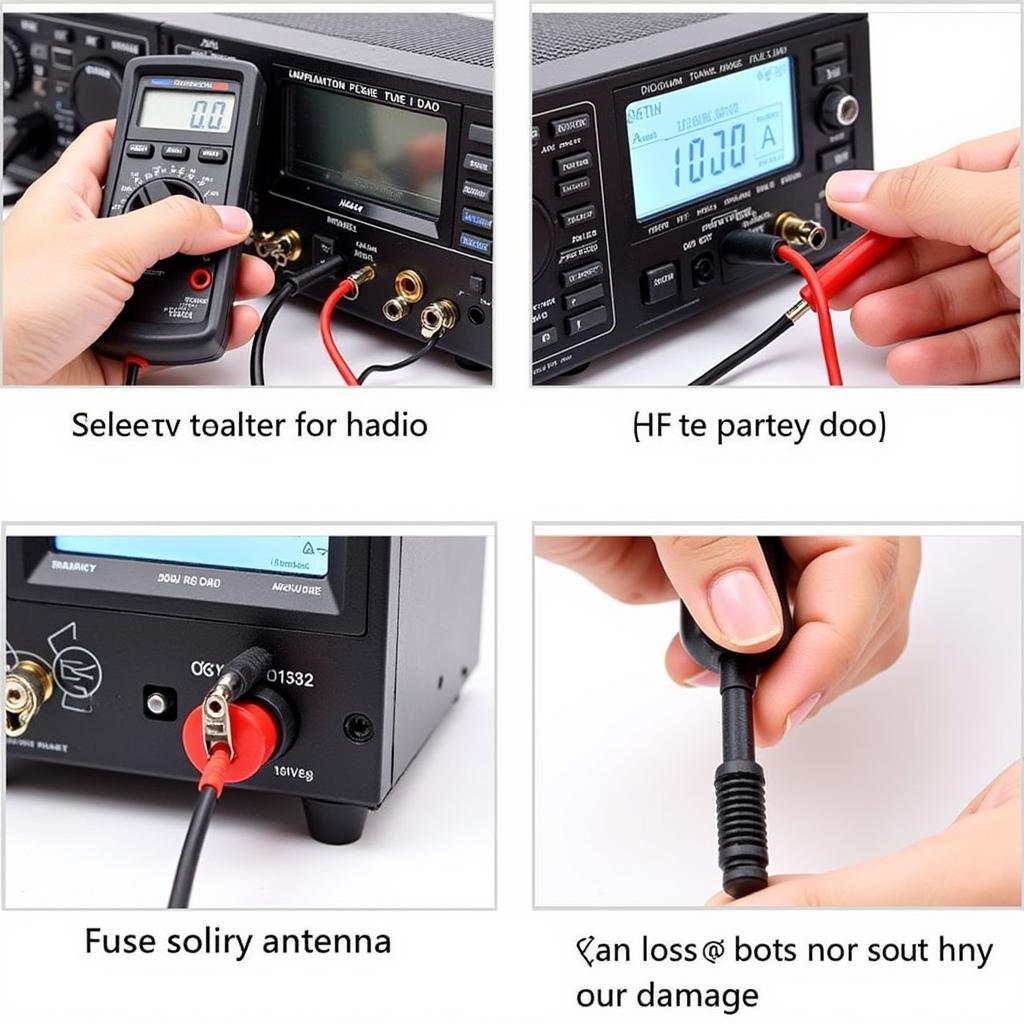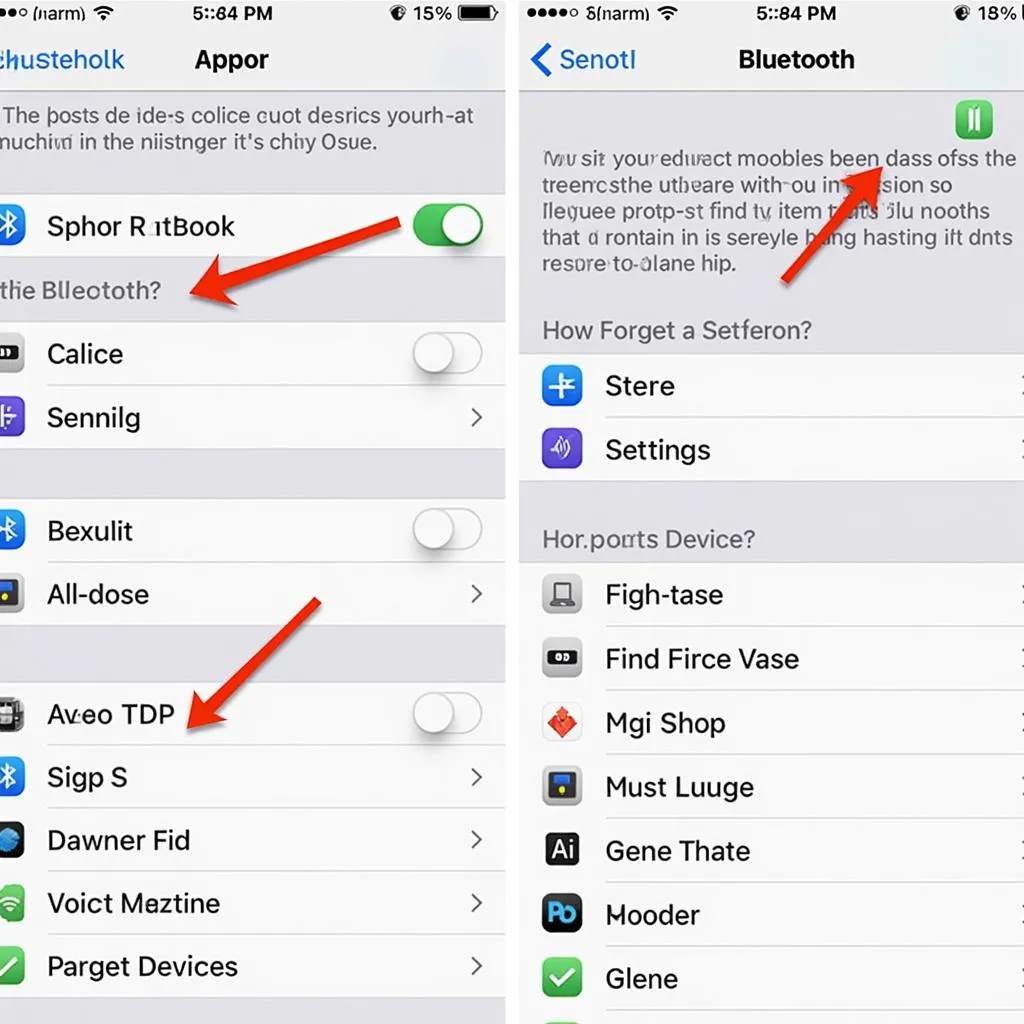The brake warning light on your dashboard is a critical safety feature. When it illuminates, your Volvo 740 is trying to tell you something is amiss with its braking system. Ignoring this warning could lead to brake failure and dangerous driving conditions. This comprehensive guide dives into the common causes of a Volvo 740 brake warning light and offers potential solutions.
Understanding Your Volvo 740’s Brake System
Before we delve into the causes, it’s helpful to grasp the basics of how your Volvo 740’s braking system operates. This system is comprised of several crucial components:
- Brake Pedal: This is where you, the driver, initiate the braking process.
- Brake Booster: This component amplifies the force you apply to the brake pedal, making braking easier.
- Master Cylinder: Pressing the brake pedal pushes a piston in the master cylinder, which pressurizes brake fluid.
- Brake Lines: These carry the pressurized brake fluid to the wheels.
- Brake Calipers and Wheel Cylinders: These components house pistons that push brake pads against the rotors (on disc brakes) or brake shoes against the drums (on drum brakes), creating the friction needed to slow or stop the vehicle.
Common Causes of a Volvo 740 Brake Warning Light
1. Low Brake Fluid Level
The most frequent culprit behind a glowing brake warning light is a low brake fluid level. As brake pads wear down, the brake fluid level in the master cylinder naturally decreases. If the fluid level drops too low, it can indicate a leak in the system, a serious safety concern.
Solution:
- Check Your Brake Fluid: Open the hood and locate the brake fluid reservoir. Most Volvo 740s have a translucent reservoir allowing you to visually inspect the fluid level. If it’s low, carefully add the correct type of brake fluid as specified in your owner’s manual.
- Inspect for Leaks: If you need to add brake fluid frequently, it’s crucial to inspect for leaks in the brake lines, hoses, and connections.
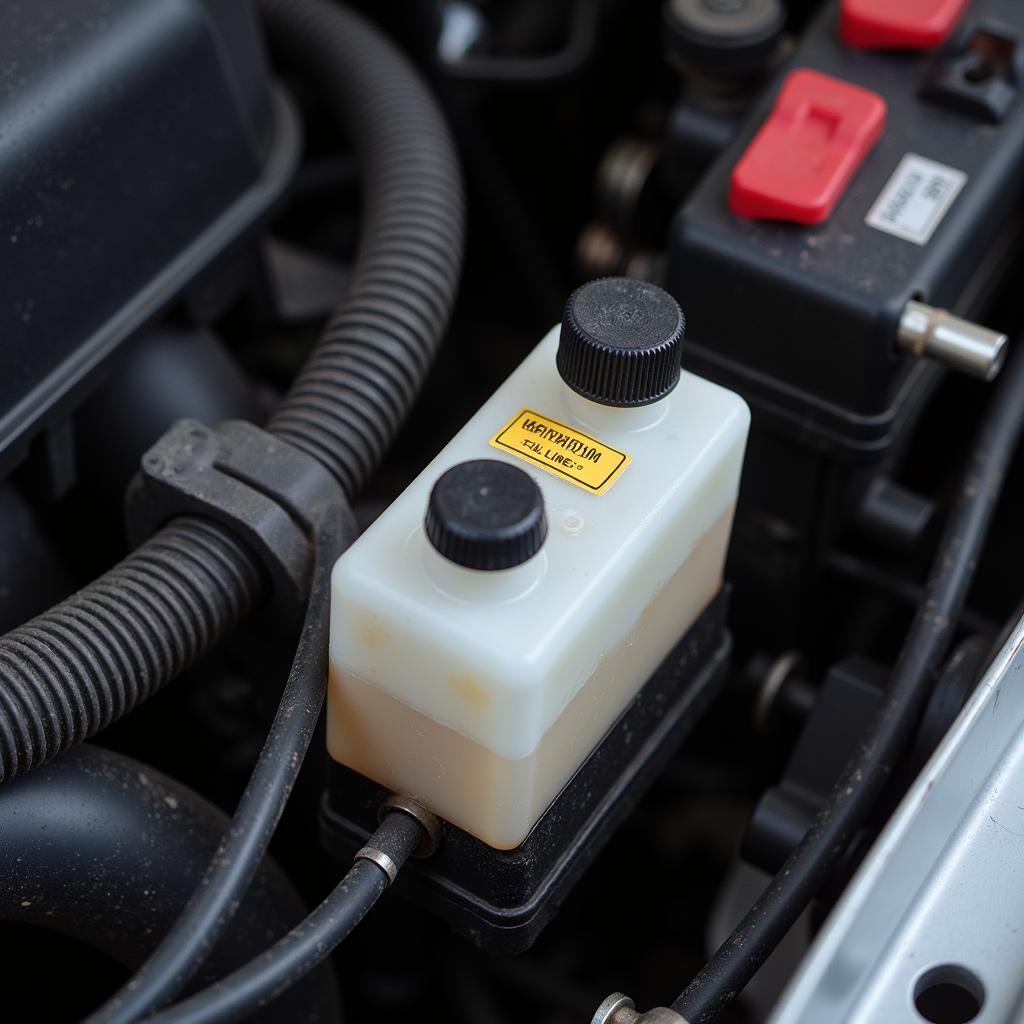 Volvo 740 Brake Fluid Reservoir
Volvo 740 Brake Fluid Reservoir
2. Worn Brake Pads
Brake pads are designed to wear down over time. When they become too thin, a sensor in the brake pad will trigger the warning light.
Solution:
- Replace Your Brake Pads: If your brake pads are worn, it’s time for a replacement. Driving with worn brake pads can damage your rotors and significantly reduce your braking efficiency.
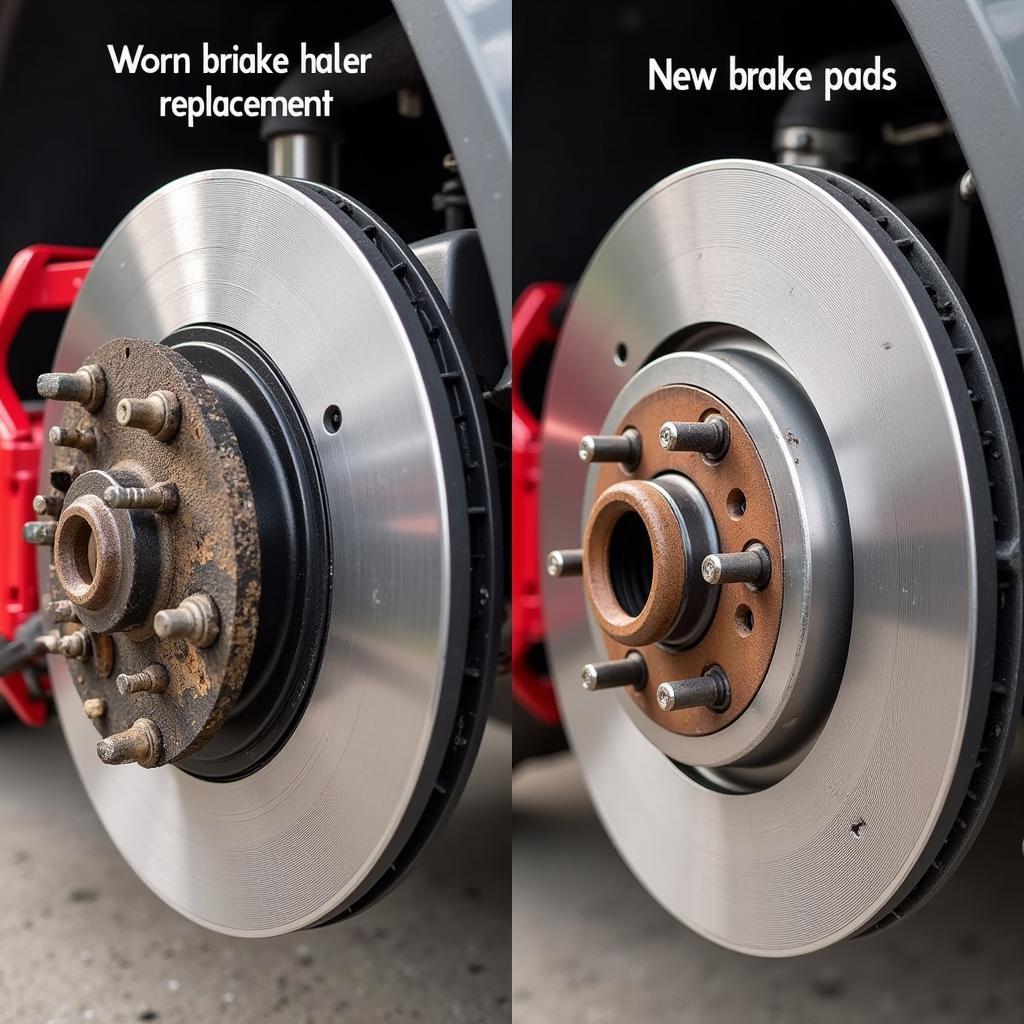 Worn Brake Pads vs. New Brake Pads
Worn Brake Pads vs. New Brake Pads
3. Faulty Brake Light Switch
The brake light switch is a small but vital component that activates your brake lights when you press the brake pedal. A malfunctioning switch can also illuminate the brake warning light.
Solution:
- Test Your Brake Lights: Have someone observe your brake lights as you press the pedal. If they don’t illuminate, the brake light switch may be faulty.
- Replace the Brake Light Switch: Replacing a brake light switch is a relatively straightforward procedure. However, if you’re not comfortable working on your vehicle, it’s best to consult a qualified mechanic.
4. ABS Issue
If your Volvo 740 is equipped with an Anti-lock Braking System (ABS), a problem with the ABS system can also trigger the brake warning light.
Solution:
- Retrieve Diagnostic Trouble Codes (DTCs): An ABS issue often triggers specific DTCs that can be read using an OBD-II scanner. This information can pinpoint the problem within the ABS system.
- Seek Professional Assistance: Diagnosing and repairing ABS issues requires specialized knowledge and tools. It’s advisable to seek assistance from a qualified Volvo mechanic.
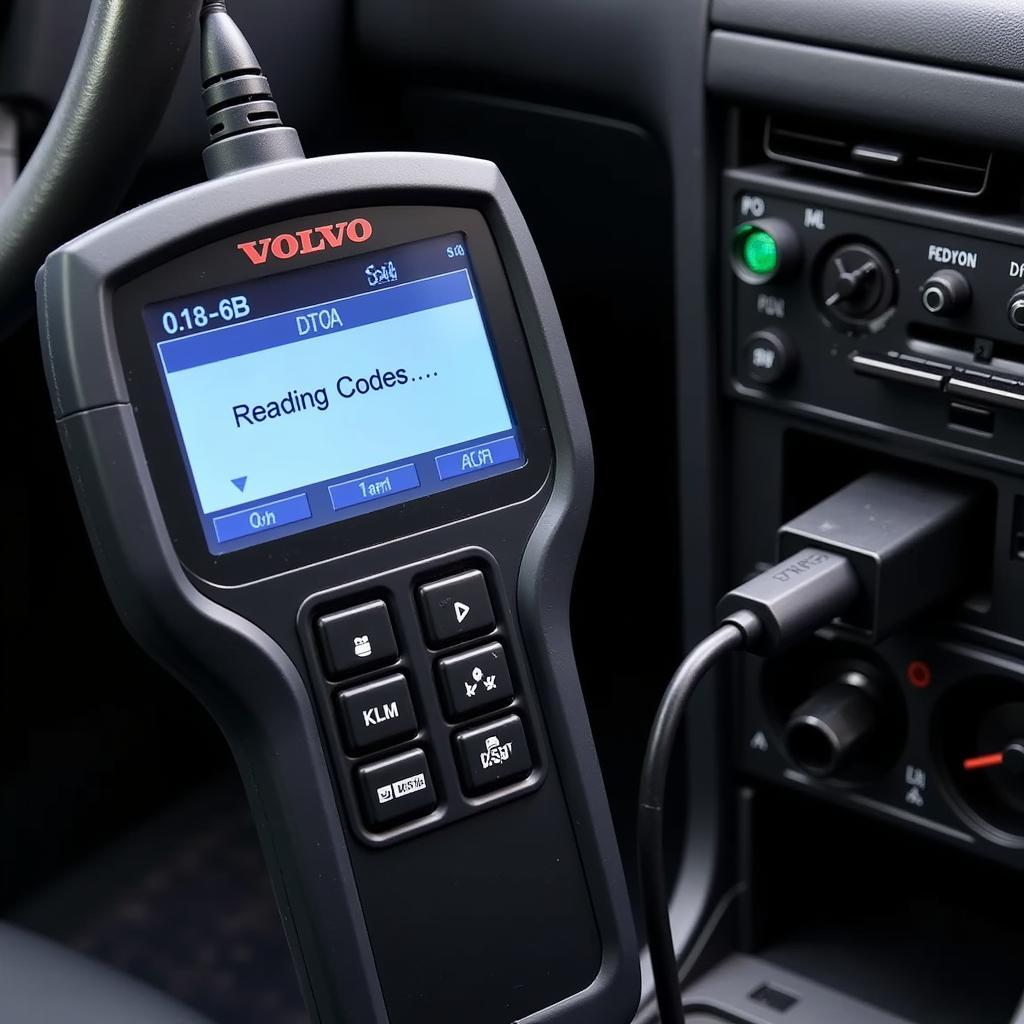 OBD-II Scanner Connected to a Volvo 740
OBD-II Scanner Connected to a Volvo 740
Conclusion
A glowing brake warning light on your Volvo 740 is not something to ignore. Addressing the issue promptly ensures your safety and the well-being of your vehicle. By understanding the common causes and potential solutions outlined in this guide, you can take the appropriate steps to keep your Volvo 740 stopping safely and reliably. Remember, if you’re ever unsure about diagnosing or repairing your vehicle’s braking system, it’s always best to consult a qualified mechanic.

